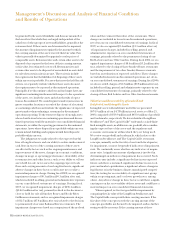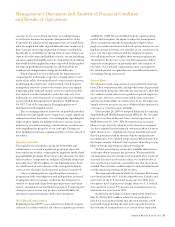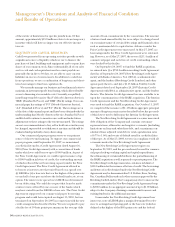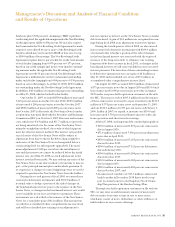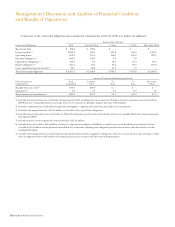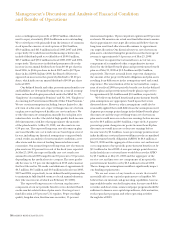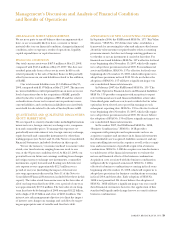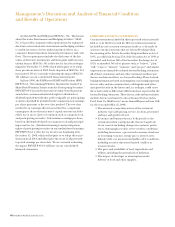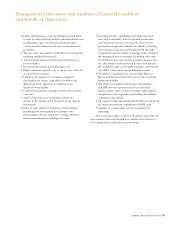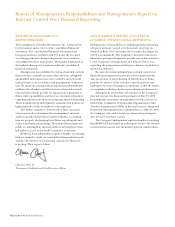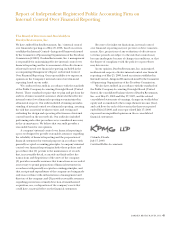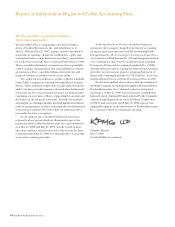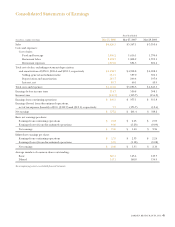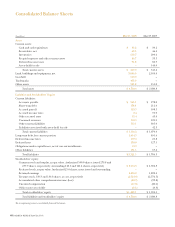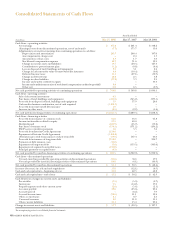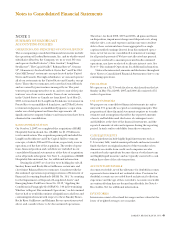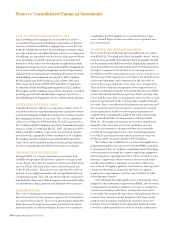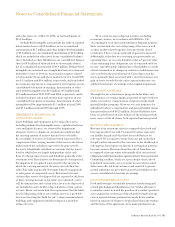Red Lobster 2008 Annual Report Download - page 45
Download and view the complete annual report
Please find page 45 of the 2008 Red Lobster annual report below. You can navigate through the pages in the report by either clicking on the pages listed below, or by using the keyword search tool below to find specific information within the annual report.DARDEN RESTAURANTS, INC. 41
Management’s Discussion and Analysis of Financial Condition
and Results of Operations
• Labor and insurance costs, including increased labor
costs as a result of federal and state-mandated increases
in minimum wage rates and increased insurance
costs as a result of increases in our current insurance
premiums;
• The loss of key personnel or difficulties recruiting and
retaining qualified personnel;
• A material information technology interruption or
security failure;
• Increased advertising and marketing costs;
• Higher-than-anticipated costs to open, close, relocate
or remodel restaurants;
• Litigation by employees, consumers, suppliers,
shareholders or others, regardless of whether the
allegations made against us are valid or we are
ultimately found liable;
• Unfavorable publicity relating to food safety or other
concerns;
• A lack of suitable new restaurant locations or a
decline in the quality of the locations of our current
restaurants;
• Federal, state and local regulation of our business,
including laws and regulations relating to our
relationships with our employees, zoning, land use,
environmental matters and liquor licenses;
• Growth objectives, including lower-than-expected
sales and profitability of newly-opened restaurants,
our expansion of newer concepts that have not yet
proven their long-term viability, our ability to develop
new concepts, risks associated with growth through
acquisitions, and our ability to manage risks relating to
the opening of new restaurants, including real estate
development and construction activities, union activi-
ties, the issuance and renewal of licenses and permits,
the availability and cost of funds to finance growth and
our ability to hire and train qualified personnel;
• Our plans to expand newer concepts like Bahama
Breeze and Seasons 52 that have not yet proven their
long-term viability;
• Our ability to combine and integrate the business
of RARE into our operations in a successful and
timely manner and to achieve synergies following the
completion of the acquisition, including the ultimate
realization of goodwill;
• The impact of the substantial indebtedness we incurred
in connection with the acquisition of RARE; and
• A failure of our internal controls over financial
reporting.
Since it is not possible to foresee all such factors, risks and
uncertainties, investors should not consider these factors to
be a complete list of all risks or uncertainties.



